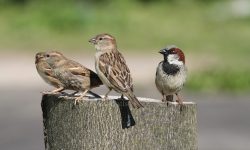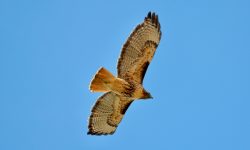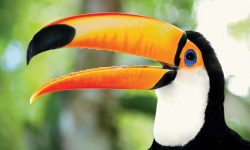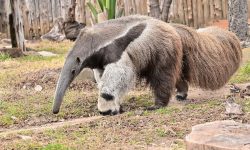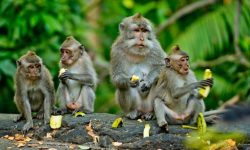Pigeons are among the most familiar and widespread birds on Earth. Often seen in urban parks, rooftops, and town squares, these birds are more than just city dwellers. Pigeons possess a remarkable set of traits that make them successful survivors and fascinating creatures. From their impressive navigation skills to their unique parenting methods, let’s explore the seven most notable characteristics of pigeons.
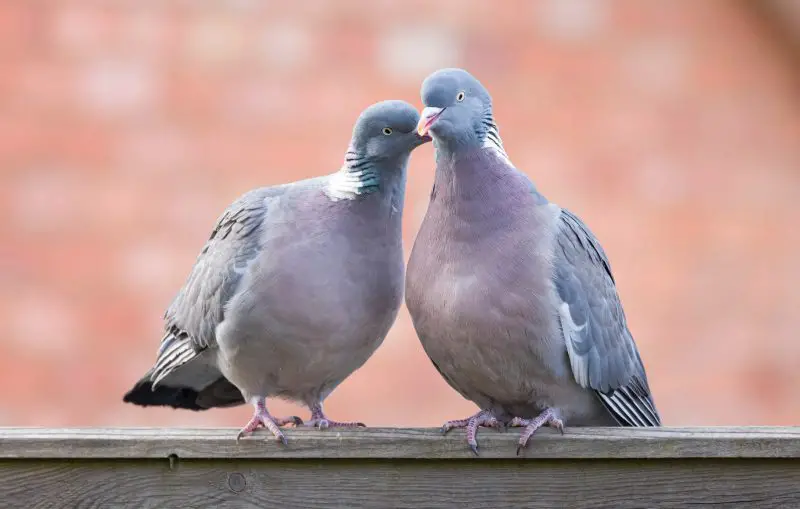
1. Strong and Rounded Body with Smooth Feathers
Compact Build with Subtle Elegance
Pigeons possess a stout, muscular frame that’s built for endurance and control in the air. Their bodies are rounded, with a relatively short neck and a small, sleek head that gives them a compact, aerodynamic shape. What makes them truly eye-catching, however, is their plumage. Feathers are smooth, tightly packed, and often shimmer with an iridescent sheen—especially around the throat and neck. In rock pigeons, this glow ranges from metallic green to violet-purple, catching the sunlight as they strut or fly.
Domesticated and ornamental breeds display an even wider palette of colors—from pure white and bronze to deep blue-black and speckled patterns—each with a unique feather texture and flair. Their visual variety is one of the reasons pigeons have been domesticated and admired across cultures for thousands of years.
Built for the Sky—and the City
The pigeon’s rounded body isn’t just for looks; it’s perfectly adapted for strong, stable flight. Their large breast muscles, which power the wings, take up a significant portion of their body mass, allowing them to sustain long flights and sudden bursts of speed. Meanwhile, their tightly knit feathers act as natural insulation and weatherproofing, helping them withstand rain, wind, and changing temperatures.
This sturdy, streamlined design allows pigeons to thrive in both natural cliffs and concrete jungles. Whether nesting on a rocky ledge or the edge of a skyscraper, pigeons remain agile, durable, and ever adaptable to the modern world around them.
2. Exceptional Navigational Abilities
A Natural GPS: The Homing Instinct
Perhaps the most astonishing trait of pigeons is their uncanny ability to find their way home—no matter how far they’ve traveled. This homing instinct isn’t just impressive—it’s legendary. Pigeons have been known to fly hundreds, even over a thousand miles, only to return with pinpoint accuracy to their nest or loft. Long before GPS and satellite communication existed, humans relied on these feathered navigators to deliver important messages across vast distances, including during wartime.
This ability isn’t learned—it’s innate. Even when released in unfamiliar territory, pigeons reorient themselves quickly and begin the journey back home with determination and efficiency that rivals modern technology.
How They Do It: Magnetic Fields, Sunlight, and Scents
So, how exactly do pigeons pull off these epic returns? Scientists have discovered that pigeons use a sophisticated blend of natural cues. One of the key tools is Earth’s magnetic field. Inside a pigeon’s upper beak are microscopic particles of magnetite—tiny magnets—that may help them detect subtle shifts in the planet’s magnetic lines. This inner compass guides them like an invisible map.
They also read the position of the sun throughout the day, using it as a celestial clock and compass. But that’s not all—studies have shown pigeons can pick up low-frequency sounds generated by natural forces like ocean waves or distant earthquakes, allowing them to form a mental “soundscape” of their environment.
Even smell plays a role. Some research suggests that pigeons remember geographic odors and use scent patterns to refine their sense of direction. Together, these abilities form a multilayered navigation system that is both incredibly advanced and deeply mysterious—even to science.
3. Sharp Vision and Memory
Eyes Like a Prism: Seeing the Unseen
Pigeons don’t just see the world—they see more of it than we do. Their eyesight is among the best in the avian world. Unlike humans, pigeons can detect ultraviolet (UV) light, allowing them to perceive a broader and more vivid spectrum of colors. What appears dull or gray to us might shine with glowing patterns through a pigeon’s eyes. This heightened vision helps them spot potential mates, identify rivals, locate food sources, and react quickly to predators.
Their eyes are also designed for motion detection. They can see fine details even while flying at high speed, a skill essential for navigating busy cityscapes or avoiding aerial threats. Pigeons even have a higher flicker-fusion rate than humans, meaning they process visual information more rapidly—almost like viewing the world in a faster frame rate.
Brains That Remember Faces
But pigeons aren’t just visual marvels—they’re memory masters too. These birds have a well-developed brain region called the nidopallium caudolaterale, which functions similarly to the human prefrontal cortex. Thanks to this brainpower, pigeons can recognize and remember individual human faces, even distinguishing between friendly people who feed them and those who shoo them away.
Experiments have shown that once a pigeon learns to associate a person’s face with an experience, it can remember that face for years. Their ability to store and recall visual information with precision makes them surprisingly intelligent, challenging the long-standing stereotype of birds with “small brains.”
In cities around the world, pigeons quietly observe us from rooftops and railings—noticing, remembering, and perhaps forming opinions of their own.
4. Unique Parenting: Pigeon Milk
A Rare Superfood from Both Mom and Dad
In the bird world, pigeon parents break all the rules. While most bird species rely on the female alone to feed their chicks, pigeons have evolved a remarkable and rare trait: both male and female produce a nutrient-rich substance known as “pigeon milk.” This milk isn’t dairy, of course—it’s a thick, curd-like secretion produced in a specialized part of the throat called the crop.
This avian milk is packed with essential fats, proteins, and immune-boosting compounds. Unlike regurgitated food, pigeon milk is a biological secretion, more similar in function to mammalian milk than anything found in most birds. For the first week or so of life, baby pigeons—called squabs—feed exclusively on this substance.
Lifesaving Nourishment for the Young
Pigeon milk is absolutely vital to the survival of newborn chicks. Squabs are born helpless, blind, and featherless, and they rely entirely on this rich milk to grow rapidly during their first days. Without it, they would fail to thrive. Once the chicks grow stronger, the parents gradually introduce pre-digested seeds and solid food, but the milk remains an essential early boost.
What makes this even more extraordinary is the cooperative nature of pigeon parenting. The male and female take turns feeding their chicks with crop milk, ensuring round-the-clock care and balanced nutrition. This shared responsibility is not only rare among birds—it highlights the deep bond and teamwork between pigeon pairs.
This unique form of parenting showcases the biological ingenuity of pigeons and sets them apart as some of the most devoted and cooperative caregivers in the bird kingdom.
5. Monogamous and Loyal Mates
Love That Lasts a Lifetime
When it comes to loyalty, pigeons are model partners. These birds typically form monogamous pairs, bonding with a single mate for life. Once a pair has chosen each other, they stay together through multiple breeding seasons—sometimes for many years—sharing the trials of parenting and the joys of nesting.
Their courtship rituals are gentle yet persistent: males perform graceful bowing displays, puffing out their chests and cooing softly while circling the female. If the female accepts, the bond is sealed, and the two begin a partnership built on mutual cooperation and trust.
A True Parenting Team
Pigeon couples don’t just share affection—they share responsibility. The male gathers twigs, grass, and other nest-building materials, while the female arranges them into a modest but functional nest. Once the eggs are laid—usually two per clutch—both parents take turns incubating them. The male typically covers the daytime shift, while the female takes over at night.
After hatching, both parents feed the chicks with nutrient-rich pigeon milk. Their commitment to co-parenting, teamwork, and loyalty makes pigeons one of the most egalitarian bird species in terms of raising young.
6. Strong and Enduring Flyers
Distance and Determination
Despite their rounded bodies and calm street presence, pigeons are powerhouses in the air. Built for endurance, their flight muscles—particularly the pectorals—are extraordinarily developed, making up nearly 30% of their total body weight. This muscular strength allows them to maintain long, steady flights over great distances without fatigue.
Homing pigeons, trained for races and message delivery, regularly travel hundreds of miles in a single journey, displaying a level of stamina that rivals migratory species.
Speed with Precision
In addition to distance, pigeons are known for their speed and agility. Some breeds can reach speeds of 50 to 60 miles per hour, darting through alleys, dodging buildings, and avoiding aerial predators with surprising finesse.
Their rapid reflexes and aerodynamic bodies enable tight turns, sudden stops, and mid-air course corrections—all essential for navigating both natural terrain and busy urban environments. Whether soaring above open fields or weaving through skyscrapers, pigeons prove that strength and grace can indeed go hand in hand.
7. Adaptability to Urban Environments
Masters of the Concrete Jungle
Few birds have embraced city life like pigeons. Originally nesting on cliffs and rocky outcrops in the wild, pigeons have seamlessly transferred those instincts to the urban world. Building ledges, windowsills, rooftops, bridges, and overpasses now serve as perfect substitutes for their ancestral cliffside homes. Cities, with their vertical architecture and hidden crevices, mimic the rugged terrain pigeons once favored—only now, the environment comes with fewer natural predators and an abundance of opportunities.
Pigeons don’t just survive in cities—they thrive. Their population density in urban areas far exceeds that in rural or natural environments, a testament to their ability to adapt and evolve alongside human development.
Flexible Diet, Fearless Attitude
Another secret to the pigeon’s urban success is its opportunistic feeding behavior. These birds are not picky eaters. In cities, they scavenge breadcrumbs, popcorn, discarded fast food, grains, seeds, and even insects—essentially anything edible they can find. This dietary flexibility allows them to flourish in environments where food availability fluctuates and traditional foraging is limited.
They’re also notably comfortable around humans. While many wild birds are shy or easily startled, pigeons show a high tolerance for human presence. Over generations, they’ve become desensitized to crowds, traffic, and city noise, making them one of the few wild species that coexist so closely with people.
Whether on a bustling sidewalk or perched on a skyscraper, pigeons embody urban resilience. Their remarkable adaptability has made them one of the most widespread and enduring bird species in the world.
Conclusion
From their soft feathers to their loyal nature, pigeons are full of surprising characteristics. Their adaptability, intelligence, and parental care have earned them a permanent place in cities and hearts across the globe. Understanding these seven key traits helps us appreciate these common yet remarkable birds in a whole new light.


